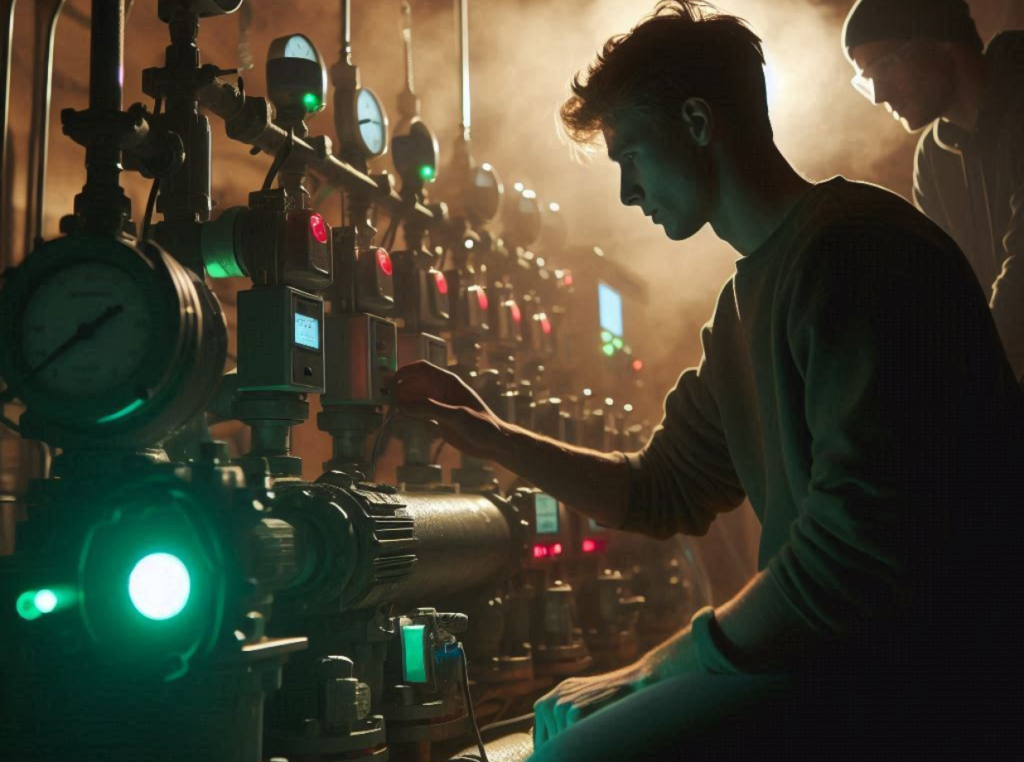Introduction
Chlorine has long been a crucial component in the treatment of wastewater, playing a vital role in ensuring the safety and quality of our water resources. As the primary disinfectant used in wastewater treatment, chlorine is responsible for:

- Eliminating harmful pathogens, bacteria, and other microorganisms
- Oxidizing organic matter
- Removing color and odor
- Controlling the growth of algae and other aquatic organisms
By carefully managing the chlorine dosage, wastewater treatment plants can strike a balance between effective disinfection and minimizing potential environmental impacts.
Key Takeaways
- Chlorine dosing is crucial in wastewater treatment to disinfect and remove harmful pathogens and microorganisms.
- Factors such as flow rate, chlorine demand, and contact time must be considered when sizing a chlorine dosing pump.
- Calculating the chlorine demand for your facility involves determining the amount of chlorine needed to achieve disinfection.
- The appropriate chlorine dosage rate is determined based on the chlorine demand and the desired level of disinfection.
- Selecting the right chlorine dosing pump size and capacity is essential for accurate and efficient dosing.
- Accurate chlorine injection and mixing are vital to ensure uniform disinfection throughout the wastewater.
- Monitoring and adjusting the chlorine dosing system is necessary to maintain optimal disinfection levels.
- Regular maintenance and troubleshooting are important to keep chlorine dosing pumps functioning properly.
- Compliance with regulations and best practices is crucial for safe and effective chlorine dosing in wastewater treatment.
Factors to Consider When Sizing a Chlorine Dosing Pump
When selecting a chlorine dosing pump for a wastewater treatment facility, consider the following factors:
- Wastewater flow rate and volume
- Chlorine demand and required dosage
- Pump capacity and discharge pressure requirements
These factors ensure that the pump can deliver the required chlorine dose consistently and efficiently.
Calculating the Chlorine Demand for Your Wastewater Treatment Facility
To determine the chlorine demand:
- Analyze the wastewater characteristics (BOD, COD, TSS, etc.)
- Conduct jar tests or pilot studies
- Consider fluctuations in wastewater composition and seasonal variations
- Continuously monitor and re-evaluate the chlorine demand
Determining the Appropriate Chlorine Dosage Rate
Selecting the right chlorine dosage involves:
- Considering wastewater characteristics
- Evaluating desired disinfection levels
- Meeting regulatory requirements
- Balancing effectiveness with environmental impact
- Conducting tests to determine minimum effective dosage
- Implementing continuous monitoring and feedback control systems
Selecting the Right Chlorine Dosing Pump Size and Capacity
Consider the following when choosing a chlorine dosing pump:
| Parameter | Value |
|---|---|
| Flow rate of wastewater | ______ m3/hr |
| Desired chlorine residual | ______ mg/L |
| Chlorine dosing pump capacity | ______ L/hr |
| Chlorine solution strength | ______ % |
| Operating pressure | ______ bar |
Additionally, consider:
- Pump’s turndown ratio
- Discharge pressure requirements
- Ability to handle peak demand
Ensuring Accurate Chlorine Injection and Mixing
To achieve effective chlorine dosing:
- Position the injection point strategically
- Promote rapid and uniform chlorine dispersion
- Use static mixers, baffles, or other flow-enhancing devices
- Monitor chlorine residuals at various points in the treatment process
- Minimize the formation of disinfection byproducts
Monitoring and Adjusting the Chlorine Dosing System
Implement a comprehensive monitoring and control system:
- Use online chlorine analyzers and flow meters
- Implement automated control systems
- Be prepared for manual interventions when necessary
- Continuously adjust based on real-time data
Maintenance and Troubleshooting Tips for Chlorine Dosing Pumps
To ensure long-term reliability:
- Perform regular preventive maintenance
- Address common issues like cavitation, leaks, and clogging promptly
- Follow manufacturer’s guidelines for chemical storage and handling
- Train operators in troubleshooting and maintenance procedures

Regulatory Compliance and Best Practices
Ensure safe and effective chlorine dosing by:
- Understanding and adhering to applicable regulations
- Implementing robust safety protocols and PPE requirements
- Maintaining detailed records and reports
- Fostering a culture of safety and compliance
Frequently Asked Questions
- What is a chlorine dosing pump? A device used to accurately inject chlorine into water or wastewater treatment systems for disinfection.
- Why is sizing a chlorine dosing pump important? To ensure the correct amount of chlorine is added, avoiding overdosing or underdosing.
- What factors should be considered when sizing a chlorine dosing pump? Flow rate, desired chlorine residual, type of chlorine, and system operating conditions.
- How can I calculate the correct size for a chlorine dosing pump? Use the formula: Pump Flow Rate (L/hr) = Flow Rate (L/hr) x Dosage (mg/L) / 1000. Consult a professional for accuracy.
- What are the different types of chlorine dosing pumps available? Diaphragm pumps, peristaltic pumps, and piston pumps, each suitable for different applications.
- How can I ensure proper maintenance of a chlorine dosing pump? Perform regular inspection, cleaning, and calibration following the manufacturer’s guidelines.